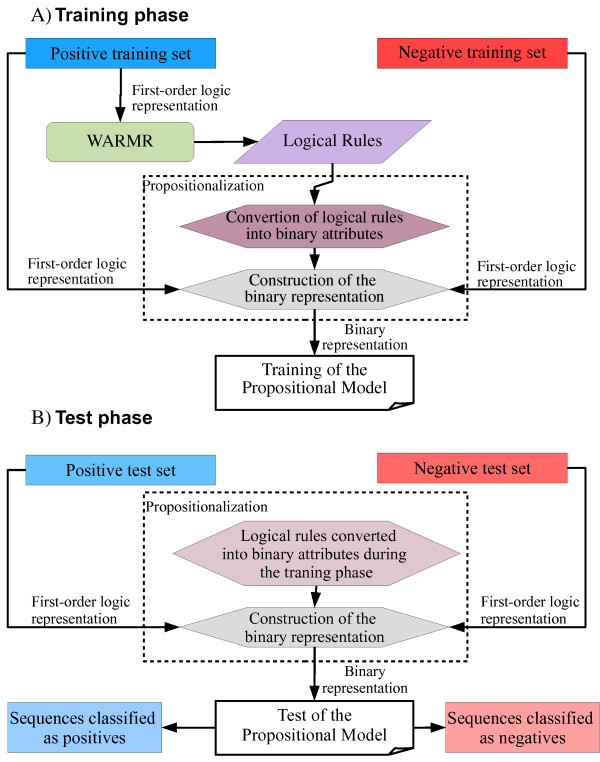Figure 1.
Flowchart of the method. A) Training phase. Each sequence in the positive training set is represented through first-order logic predicates. WARMR learns logical rules on the set. These rules are converted into binary attributes in order to train propositional models; this step is called propositionalization. Next, each sequence in the positive and negative training set is represented through binary attributes, and finally propositional models, such as DTs or SVM, are trained. B) Test phase. Each sequence in the positive and negative test set is represented through binary attributes that correspond to the logical rules learned during the training phase. Next, the propositional model is tested and its output is divided into sequences classified as positives and sequences classified as negatives.

